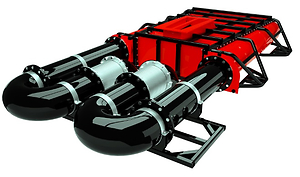Nowoczesne systemy zmniejszające toksyczność spalin
pojazdów kolejowych
1
Politechnika Poznańska
2
Instytut Pojazdów Szynowych „TABOR”
Publication date: 2016-09-02
Rail Vehicles/Pojazdy Szynowe 2016,3,33-38
ABSTRACT
In order to minimize the share of toxic substances in exhaust gases emitted by the engine it
is necessary to continuously, because the provisions on emissions are now being rapidly
changed and tightened, work on modern aftertreatment systems. It is, therefore, required
that increasingly sophisticated and structurally efficient solutions that ensure maximum
reduction of toxic exhaust are being used. The article presents examples of systems that are
currently used in some diesel rail vehicles.
REFERENCES (11)
1.
Kettner J.: Moving towards sustainable mobility a strategy for 2030 and beyond for the European railway sector. 12 UIC Sustainability Conference, Venice 2012.
2.
Lenz M.: Powertrains and fuels for locomotives. Electro-Motive Diesel, NAFTANEXT, April 23, 2014.
3.
Miłaszewicz D., Ostapowicz B.: Stan transportu kolejowego w Polskiej gospodarce. Studia i prace Wydziału Nauk Ekonomicznych i Zarządzania nr 25, Uniwersytet Szczeciński.
4.
Park P.W., Downey M., Youngren D., Bruestle C.: Advanced aftertreatment system development for a locomotive application. ASME 2012 Internal Combustion Engine Division Fall Technical Conference ICEF2012, September 23−26, 2012, Vancouver, Canada.
6.
Rokosch U.: Układy oczyszczania spalin i pokładowe systemy diagnostyczne samochodów. WKiŁ, Warszawa 2007.
We process personal data collected when visiting the website. The function of obtaining information about users and their behavior is carried out by voluntarily entered information in forms and saving cookies in end devices. Data, including cookies, are used to provide services, improve the user experience and to analyze the traffic in accordance with the Privacy policy. Data are also collected and processed by Google Analytics tool (more).
You can change cookies settings in your browser. Restricted use of cookies in the browser configuration may affect some functionalities of the website.
You can change cookies settings in your browser. Restricted use of cookies in the browser configuration may affect some functionalities of the website.



